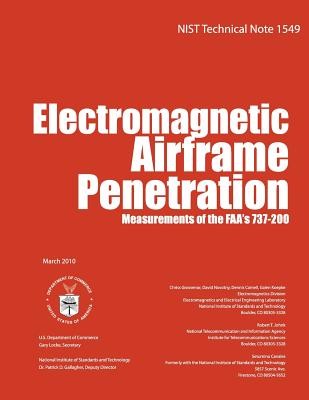
- We will send in 10–14 business days.
- Author: U S Department of Commerce
- Publisher: CreateSpace Independent Publishing Platform
- Year: 2014
- Pages: 246
- ISBN-10: 1495965880
- ISBN-13: 9781495965883
- Format: 21.6 x 28 x 1.3 cm, softcover
- Language: English
- SAVE -10% with code: EXTRA
Reviews
Description
The Federal Aviation Administration (FAA) is responsible for the safety of civilian aviation [1]. Included in this function is the responsibility to ensure that the flight hardware is safe from an electromagnetic interference (EMI) event that could jam navigational equipment and render flight hardware inoperable. The avionics systems are flight critical, and uninterrupted operation is required in order to fly the aircraft safely. There is a history of EMI-induced system failures in both military and commercial electronic systems [2-5]. This is one of the reasons why manufacturers of aircraft are required to submit test data showing that their aircraft can provide enough protection or shielding of interior flight systems from outside electromagnetic sources. These tests are called high intensity radiated field (HIRF) measurements and are used to determine the shielding effectiveness of the aircraft from radiating sources [6-13]. HIRF sources are only those emitters that intentionally generate emissions. HIRF sources include radio and TV transmitters, airport and weather radar, and various military systems, both ground-based and airborne, such as surveillance radar, electronic warfare (EW) systems, and electromagnetic weapons. These radiating sources can also include ground tracking radars, electromagnetic pulse (EMP) events, both natural and man-made, such as lightning or EMP ordnance, cell phones, electrostatic discharge (ESD), and other events. The hazard levels for these interferers have been studied [14] and are incorporated into HIRF test methodologies [15].
EXTRA 10 % discount with code: EXTRA
The promotion ends in 19d.15:12:56
The discount code is valid when purchasing from 10 €. Discounts do not stack.
- Author: U S Department of Commerce
- Publisher: CreateSpace Independent Publishing Platform
- Year: 2014
- Pages: 246
- ISBN-10: 1495965880
- ISBN-13: 9781495965883
- Format: 21.6 x 28 x 1.3 cm, softcover
- Language: English English
The Federal Aviation Administration (FAA) is responsible for the safety of civilian aviation [1]. Included in this function is the responsibility to ensure that the flight hardware is safe from an electromagnetic interference (EMI) event that could jam navigational equipment and render flight hardware inoperable. The avionics systems are flight critical, and uninterrupted operation is required in order to fly the aircraft safely. There is a history of EMI-induced system failures in both military and commercial electronic systems [2-5]. This is one of the reasons why manufacturers of aircraft are required to submit test data showing that their aircraft can provide enough protection or shielding of interior flight systems from outside electromagnetic sources. These tests are called high intensity radiated field (HIRF) measurements and are used to determine the shielding effectiveness of the aircraft from radiating sources [6-13]. HIRF sources are only those emitters that intentionally generate emissions. HIRF sources include radio and TV transmitters, airport and weather radar, and various military systems, both ground-based and airborne, such as surveillance radar, electronic warfare (EW) systems, and electromagnetic weapons. These radiating sources can also include ground tracking radars, electromagnetic pulse (EMP) events, both natural and man-made, such as lightning or EMP ordnance, cell phones, electrostatic discharge (ESD), and other events. The hazard levels for these interferers have been studied [14] and are incorporated into HIRF test methodologies [15].


Reviews